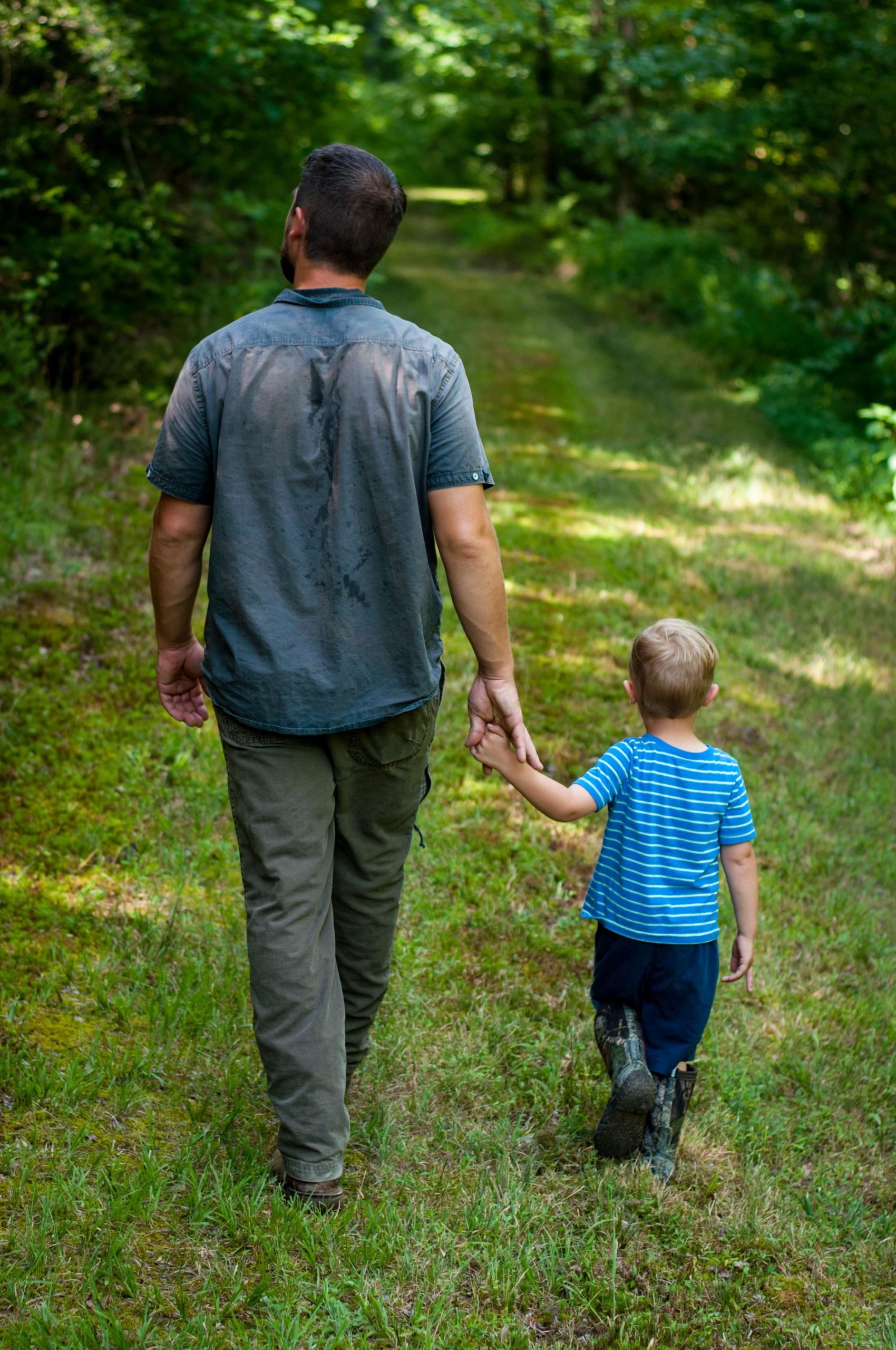Touch plays a very important part of developing attachment and bringing healing to our children who have experienced less than optimum beginnings. It was discovered in the early 19th century that touch was just as important as food, clothing and shelter to the growth and well-being of infants. Children in orphanages were dying in spite of receiving the proper food and clothing. It was observed the lack of touch was the contributing factor to these deaths. We have a biological need for touch! Research has shown that touch promotes not only physical growth but can reduce aggression, shift behaviors from negative to positive and improve brain chemistry. Touch decreases the stress hormone cortisol and increases the neuro transmitters of serotonin and dopamine. The release of these hormones can slow our heart rate, lower blood pressure, improve attention span and help us to move forward in achieving our goals.
Jesus used touch in a powerful way. We can learn from His interactions with the man who had leprosy in Matt 8:1-4. Jesus could have just spoken and healed him as he had others but, he took that extra measure of reaching out to touch him! Jewish law prohibited touching someone considered unclean. But he ignored the law and reached out to touch, the untouchable. This man who had been without physical touch needed not only the physical healing from the disease but the emotional repair from lack of touch and connection with others. Jesus used touch to heal him both physically and emotionally. In the same way we want to use touch to bring healing to our children.
Get in touch: (pun intended) with your own personal tolerance of touch. We all fall somewhere on the continuum of receptiveness to touch. A parent must be comfortable with being touched and touching others in order to help their child accept and give touch in a healthy way. If you are touch adverse examine your own history and experiences with touch. Try to identify what has caused you to be uncomfortable with touch. What types of touch do you enjoy? What types of touch are unpleasant to you? How do you need to change in this area? Your child will quickly pick up on your feelings toward touch and begin to mimic them.
Be Aware: Some children may have difficulty in processing and accepting touch. Children who have not had consistent and loving touch in their early development may be over responsive or under responsive to touch. For a child that is over responsive to touch, a soft touch, such as a kiss, could feel uncomfortable. The child responds by brushing or rubbing the area to make it feel better. A parent could interpret this action as a rejection of their affection when in fact the child needed a stronger pressure in touch for it to feel good. The child who has difficulty being under responsive to touch might need a more firm hug, handshake, or backrub to feel complete satisfaction from the touch. They might hug too hard or pat the family pet with too much pressure. As children have more positive experiences with touch they are able to learn how to receive and give touch. Touch is such an integral part of our interaction with our environment. Touch includes the pressure we use to get toothpaste from the tube onto the brush, the feel of our clothes, the texture of food in our mouth and even our response to injury and pain. Be a detective and note what type of touch your child seeks out and what type of touch your child avoids. To a parent a child’s under reaction or over reaction to touch may appear as if the child is trying to be silly or difficult; before a parent realizes it they have been pulled into a battle that can be avoided. Gaining insight and understanding regarding a child’s need for some rehabilitation in the area of touch will help you grow in your patience and ability to meet your child’s tactile needs.
Make touch predictable: Before you reach out and touch your child, kneel down on your child’s level, make eye contact and ask your child if you may touch them . Ask, “Can I give you a hug?”, “ A pat on the back?” “ Would you like a “high five”? “ This will communicate to your child that you are a safe person and that you respect their body. As you ask permission before touch, it will allow a child to relax and feel safe in your presence. It also teaches a child that they have control over their body and can say “no” to touch. For a child who has experienced forced negative touch this will go a long way in building a sense of safety and trust in your relationship. Asking permission also models for your child how they should give touch to others. Some children can be very enthusiastic huggers and need to learn to ask for permission before they deliver that big bear hug and catch you unawares. When giving care such as changing clothes, giving a bath, or cleaning a wound, verbally explain how you are going to touch and why. In cleaning a wound let your child know the sensations and pain they might experience in order to minimize any surprises. Game: Using squirt, nerf or marshmallow guns is a great way to teach both asking permission and respect of others bodies. Rules as follows: You cannot shoot at someone’s head/face. You must ask permission and name body part before shooting. “Mommy, may I squirt your belly?” You have to accept “no” as a response, but you can ask for a compromise, “Ok, if I can’t shoot your belly, may I shoot your knee?”
How to Touch: Until you know your child’s tolerance to touch or their triggers do not engage in tickle games or rough housing. Be aware that the chest and stomach area can be vulnerable places for children and so keep your touch limited to extremities. Touch children with one hand and open palm. Place your hand gently on arms, shoulder or back. Do not initially grab a child with both of your hands on both of their arms at the same time as this might cause a child to feel trapped and trigger panic. The amount of pressure used in touch is also important. A light touch might feel creepy to a child. Use a firm put gentle pressure. Teach your child to identify the level of pressure they like, do they want a baby bear touch, mama bear touch or papa bear touch? When giving a massage rub in the same direction and with the same pressure as this is more calming. Game: Do a weather report on your child’s back using different touching techniques and pressures. Fingertips, tapping are sprinkles of rain, open hand rubbing across the back can be wind, and fists with firmer pats might be thunder. Take turns and see what type of touch your child likes to receive and give.
Begin Slowly: Slowly introduce children to different textures and You might begin with handshakes, high fives, or a pat on the back. A simple touch on their hand as you give them a snack or a toy, and sitting close to them on the floor or couch can begin to make the child more receptive and comfortable with touch. Watch for cues from your child about how much touch they are able to tolerate. Don’t be discouraged if your child does not want to sit in your lap , or let you rock them to sleep, as you allow them to become more accustomed to closeness they will become more open and willing to touch. For older children swinging together in a hammock keeps you close and achieves the same goal of rocking a younger child. Find ways to make touch playful. Activities/Games: Sitting side by side in a rocker, swing or hammock, playing hand/clapping games like “patty-cake”, or Miss Merry Mack and developing a secret hand shake. The game of Twister tricks kids into touch, helps with coordination and learning colors.
Develop a Diet of Touch: Touch needs to be intentional and incorporated as much as possible throughout the day. Wake your child with a gentle back rub. Develop a special good-bye and hello handshake or hug. Place an encouraging hand on your child’s back or shoulder when helping with homework. Brush their hair or rub their back while watching a favorite TV show. Build a 5-10-15 minute hand, foot or back massage into your child’s day after school or as part of their bedtime ritual.
Conclusion: As you implement these strategies your child should begin to improve in the area of interacting with different experiences of touch and texture. It takes time to repair years of deprivation in the area of touch so if progress is slow but steady you are on the right track. However, if your child’s experience with touch is hindering their daily function and activities or impacting their self esteem and interaction with others then you need to consult with your pediatrician. Your child might have Sensory Processing Disorder also known as Sensory Integration Dysfunction. A pediatrician can refer you to an Occupational Therapist who can assist with diagnosis and therapy for your child. As you incorporate healthy touch into your child’s day you are bringing healing and calm to their world. You are building a sense of trust, security and safety, and in no time at all you will begin to get some wonderful rewards of fantastic hugs and sloppy kisses!
More information on healthy touch, rituals, games and activities can be found in The Out-Of- Sync Child and The Out-Of-Sync Child Has Fun by Carol Stock Kranowitz and I Love You Rituals by Becky A. Bailey, Ph. D.
Developed by: Lynn Beckett, LBSW




